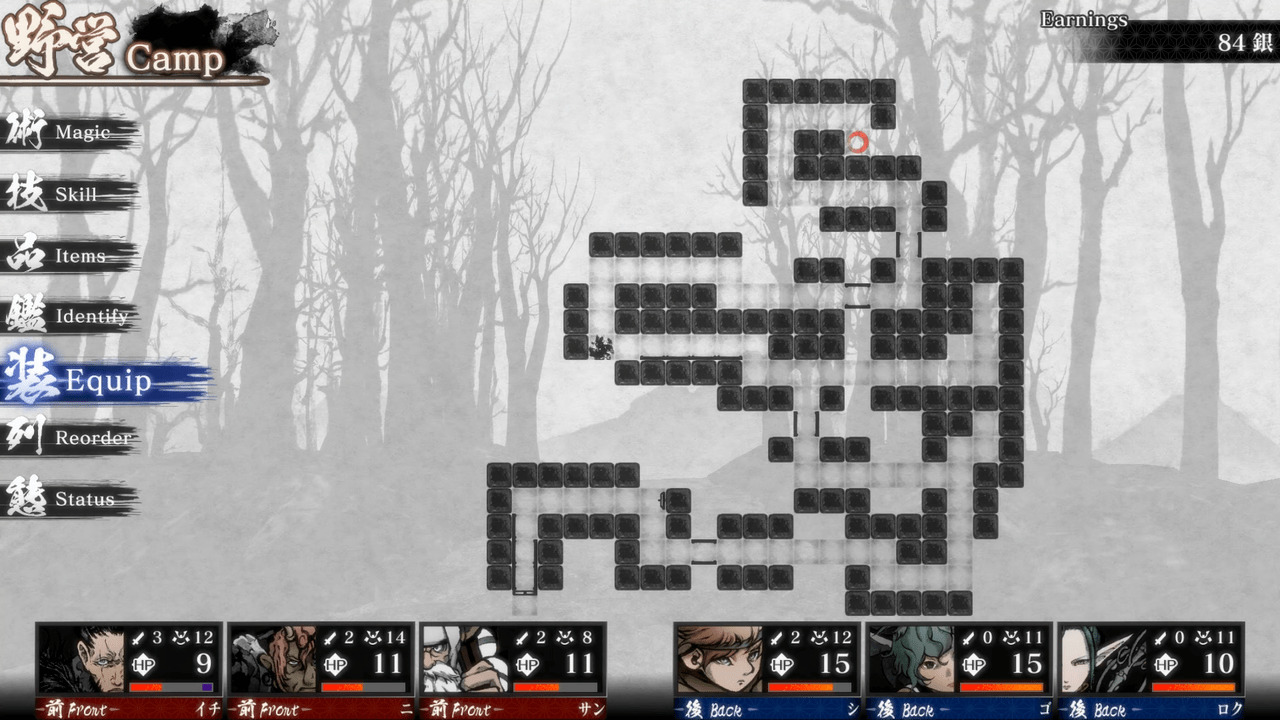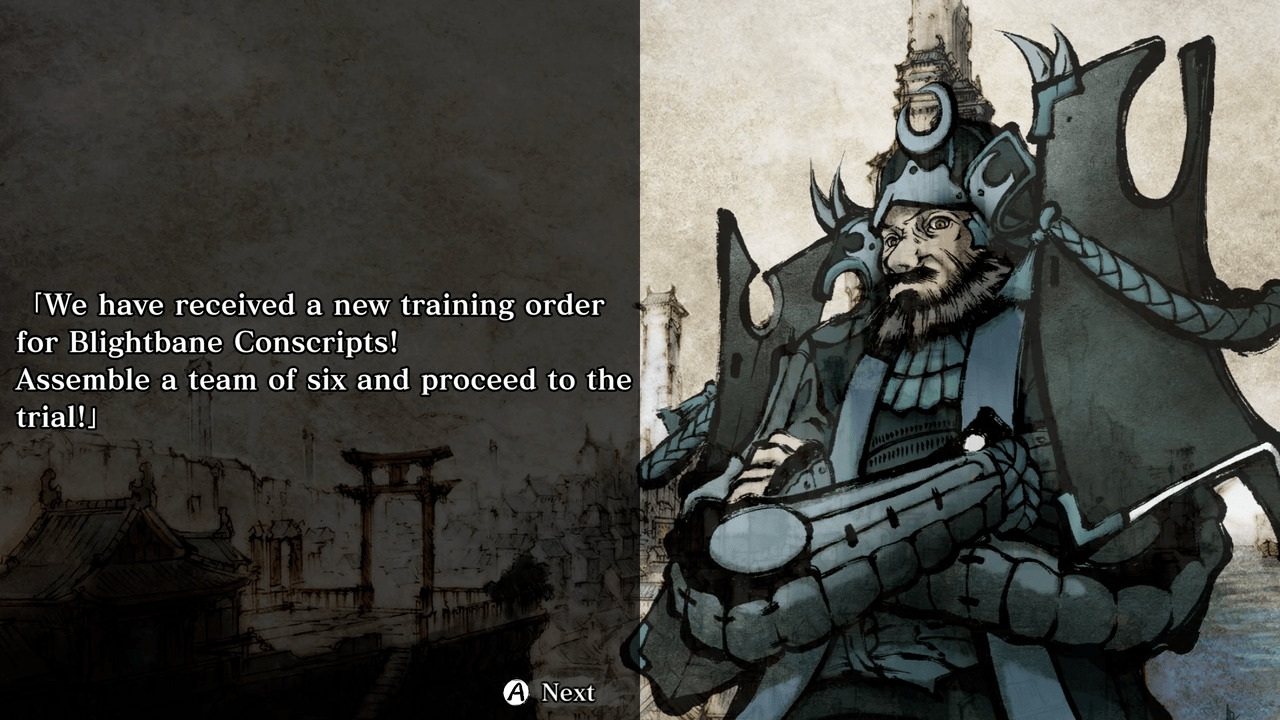Time to dive into more of Japanese history! Time to fight Japanese folklore-inspired Yokai in a stunning ink-brush-illustrated Dungeon Crawler. Set in the moonlit city of Ido, the world has blackened under the ‘Ink of Ruin’ disaster. Conscript a team of warriors to venture deep into the Labyrinths to conquer and sanctify the land!
Ido, Ido, Edo
Set in the Ido period, a play on words for Edo, the world has blackened under the disaster of the ‘Ink of Ruin.’ It’s time to conscript a team of skilled warriors to venture deep into the impure Labyrinths and conquer the Ink plaguing the land. Dangerous yokai await you inside! Will you return unscathed and free the land of this stain? Before we dive into the actual gameplay, let’s do a little background on the Edo period to give you some context.
The Edo period (江戸時代, Edo jidai) or Tokugawa period (徳川時代, Tokugawa jidai) is the period between 1603 and 1867 in the history of Japan when Japan was under the rule of the Tokugawa shogunate and the country’s 300 regional daimyos. Emerging from the chaos of the Sengoku period, the Edo period was characterized by economic growth, strict social order, isolationist foreign policies, a stable population, perpetual peace, and popular enjoyment of arts and culture.
The period derives its name from Edo (now Tokyo), where Tokugawa Ieyasu officially established the shogunate on March 24, 1603. The period ended with the Meiji Restoration and the Boshin War, which restored imperial rule to Japan.
Artwork
What stands out with Labyrinth of Zangetsu is the artwork, which is truly mesmerizing. It seamlessly blends traditional Japanese art with modern design elements. As you navigate through the game’s various environments, the beauty and complexity of its artwork become even more apparent as landmarks such as torii gates start to build around you. As you plunge deeper into winding labyrinths, the line between reality and nightmare becomes blurred. The creatures you will encounter in the Labyrinth of Zangetsu are not merely monsters but entities steeped in traditional Japanese folklore and legend, whose very presence will fill players with an unshakeable sense of dread.
Ido’s ink-ruined land is where only the most robust and most adaptable can hope to survive. To stand any chance against these evil spirits, players must customize their hero to the fullest extent, tailoring every stat and ability to their specific needs. In this brutal world, only the most cunning and ruthless heroes will emerge victorious, their journey fuelled by the unending quest for power and survival. What helps in these kinds of games is to structure your team strategically with the unique ‘front & back’ mechanic, positioning your strongest conscripts at the front for powerful attacks and your more defense allies in the back to help defend against unrelenting attacks!
Non-Labyrinthine
You may also be surprised how the non-labyrinthine Labyrinth of Zangetsu is; despite the name, exploration is a component but not the primary focus. Both a mini-and macro map that auto-fill out details as you move around make most of the pathfinding trivial compared to some of its genre contemporaries. Instead, the lion’s share of your time will be spent engaging with and taking down the various enemies. A front and backline party formation will have you hiding your mages behind as beefy a wall as you can make and let them blast away, and limited spell usage per run will have you fleeing back to town when you’re exhausted.
Labyrinth of Zangetsu knows this and embraces it. The small list of conventionally ‘modern’ features the game boasts are largely UI concessions to help it be more playable with a controller. Nevertheless, it manages to introduce them without declawing the game entirely. For better or worse, this old-school romp is unconcerned with broad appeal; and that uncompromising attitude was as much a source of frustration as it was fun. But its no-nonsense approach to the dungeon RPG formula was simple, if not easy, and made it a great pick-up-n-play steam deck or switch experience rather than the longer-term commitment that some of its peers are.
One of the summaries I found by another reviewer was the following, and I think this sums it up nicely.
If you loved the game Wizardry from the 80s, this is true to the genre of Wizardry I-III. A six-person party with three in front and three in back. Turn-based when in combat. Opponents are deployed in rows, and range and weaponry affect what each player may target (and what monsters can target your front/back). Out of combat, grid-based movement one square at a time. It has auto-mapping, a nice feature that Wizardry didn’t have.
Conclusion
So, to conclude – Labyrinth of Zangetsu is an excellent throwback to the 80s dungeon crawler with a gorgeous art style. This might be your game if you like Wizardry and are into old-school dungeon crawlers. It is great for short bursts of gaming and features enough Japanese content to fill that Edo-shaped hole in your heart. However, don’t be discouraged by the difficulty since it’s designed to be hard.





